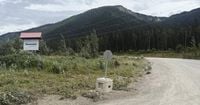In a dramatic rescue operation that captivated the mining community and families alike, three workers trapped for over 60 hours in the Red Chris mine in northern British Columbia were safely brought to the surface late Thursday night, July 24, 2025. The successful extraction marked the end of a tense ordeal that began early Tuesday morning when two rockfalls severed their access to the outside world, leaving them stranded underground in a steel refuge chamber.
Bernard Wessels, global head of safety for Newmont Corp., the Denver-based operator of the mine, confirmed the rescue at a news conference Friday morning, expressing profound relief: "Their arrival was a moment of relief for everyone involved. We are deeply relieved that all three individuals are safe and in good health and good spirits." The three men—Kevin Coumbs from Ontario, Darien Maduke from British Columbia, and Jesse Chubaty from Manitoba—are contractors working for Hy-Tech Drilling, a Smithers, B.C.-based company specializing in diamond drilling.
The Red Chris mine, situated on Tahltan Nation territory near Dease Lake and approximately 500 kilometers northwest of Terrace, B.C., has been a significant site for gold and copper mining. While primarily an open-pit operation, the mine began developing underground block-cave mining in 2019, four years after its first production. This underground expansion was where the incident occurred, about 284 meters below the surface and roughly 700 meters from the site of the rockfalls.
On the morning of Tuesday, July 22, 2025, the first rockfall struck at 7:47 a.m., prompting the workers to radio in that they had made their way to a steel refuge chamber designed to shelter up to 16 people. This chamber was stocked with ample food, water, and air supplies, intended to sustain an extended stay if necessary. However, a second, larger collapse at 10:30 a.m. severed all communication lines, plunging the workers into isolation and sparking an urgent and cautious rescue effort.
Newmont's response was swift and methodical. Using specialized drones, the rescue team conducted a thorough geotechnical assessment of the debris field, which measured between 20 to 30 meters in length and seven to eight meters in height. These drones confirmed that the rest of the mine beyond the collapse was stable and that a safe route to the refuge chamber existed behind the fallen rock. Bernard Wessels noted, "There is natural flow of air through, which is really a positive sign, where the workers are located." This airflow was critical, ensuring the trapped men could breathe fresh air while awaiting rescue.
Excavating the debris was no small feat. The pile consisted of a substantial volume of rock, with geotechnical engineering experts like Dwayne Tannant from the University of B.C.'s Okanagan campus highlighting the challenge: "Oftentimes, you might see something an order of magnitude or two orders of magnitude smaller, and that would still be a serious incident." The rescue team employed a remote-controlled scoop to carefully remove the debris, mindful that large blocks of rock mixed in the pile could complicate the operation. Tannant explained, "They probably have a drill that could drill holes and install this rock support. They may even need to spray concrete, coat the wall with concrete to help stabilize and reinforce it." This meticulous approach ensured the safety of both the trapped workers and the rescue crews.
Safety remained paramount throughout, with Newmont CEO Tom Palmer emphasizing on a Thursday earnings call that the company was focused on restoring communications, re-establishing safe access, and bringing the workers to the surface. Palmer also announced a forthcoming thorough and independent investigation into the incident's causes, promising that findings would be shared across the industry to prevent future occurrences.
The rescue operation began in earnest Thursday evening, around 8 p.m. PT, when excavation of the access tunnel commenced. After clearing a safe path, specialized vehicles entered the underground passage, retrieving the workers one by one. Wessels recounted that the men were in good spirits, even joking about using the time underground to catch up on sleep. Nevertheless, Newmont is committed to providing any necessary counseling to support their mental health after such a harrowing experience.
While underground mining operations at Red Chris have been paused pending the investigation, the open-pit mine continues to function. The incident has drawn attention not only for the successful rescue but also for the courage and resilience displayed by the workers. B.C. Premier David Eby praised the outcome, lauding the "heroic work of the rescue team" and the "remarkable courage over the 60-plus hours of being trapped underground" demonstrated by the drillers.
The Red Chris mine is also notable as one of the projects fast-tracked by British Columbia in response to U.S. tariff threats, underscoring its economic importance. The incident and subsequent rescue have highlighted the risks inherent in underground mining and the critical importance of safety protocols, such as the use of refuge chambers and advanced remote technologies in rescue operations.
As the rescued workers reunite with their families, the mining community reflects on a successful rescue born from careful planning, technical expertise, and unwavering determination. The industry now awaits the results of the investigations, hoping to learn valuable lessons that will enhance safety standards and prevent future tragedies in mines worldwide.




